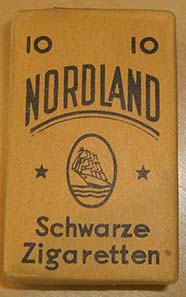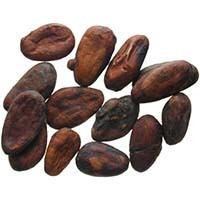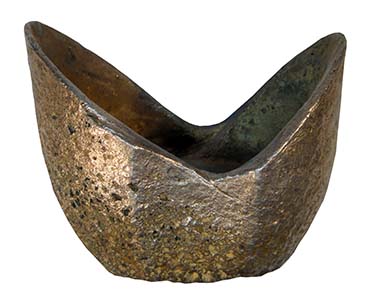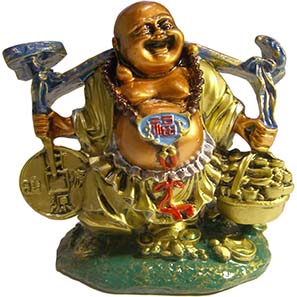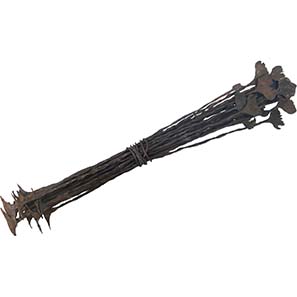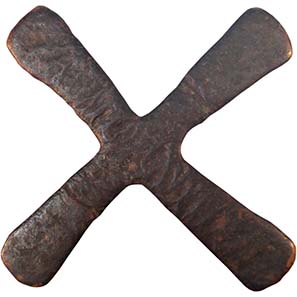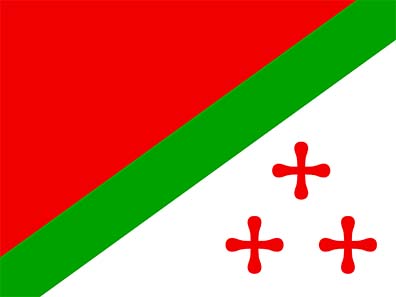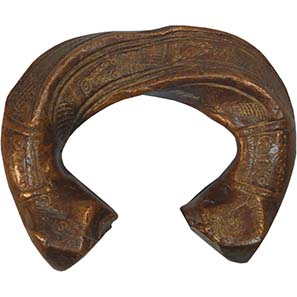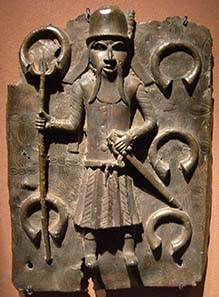by courtesy of the MoneyMuseum and the Sunflower Foundation
In 2010 the MoneyMuseum in Zurich was able to acquire a part of the Kuhn collection. At the moment, all objects are exhibited. In order to facilitate the visitors’ approach to these odd means of payment a brochure has been issued, which we publish here by courtesy of the MoneyMuseum and the Sunflower Foundation.
What Is Money?
It is incredible what has served other peoples as a means of payment at different times! Beetles’ legs and snails, shells and bars of salt, stone axes and glass pearls, all of which are really exotic. It is hard to imagine how people on the market could buy their daily food – and indeed traditional means of payment are quite different from our money in the West. In order to understand where the difference lies you first have to consider what characterises our money.
Our money, the economists determine, has four purposes. It serves as a means of exchange to make trading easier. We use it to measure the value of goods and services. Thus we deposit assets, which we do not need for the time being. And with money we can make up for misdemeanours.
Cigarette box dating from the end of World War II, used as money. Private Collection. Photo: Ursula Kampmann.
Actually anything can be used as money. That in our case metal discs and pieces of paper have become accepted was not compelling. Any object can be used to function as money temporarily as soon as a society agrees to it. If a group of participants in the market today laid down that a red crayon is worth 10, a yellow one 5 and a blue one 100 units, then within this group coloured crayons would function in the same way as money like dollars or euros. A good example of such an unwritten agreement is known from Germany in the time after the Second World War, when the entire black market was founded on the “cigarette currency.”
Today our life is based on money. We have to buy everything necessary for life by means of money. Money guarantees us independence from other people. Whoever has only a little money is poor in our world, whoever has none cannot survive.
Are Traditional Means of Payment Money in This Sense?
Means of exchange, standards of value, means of safekeeping and penalties for wrong doing: do all these four characteristic features hold true for every traditional means of payment? Certainly not.
Money in various societies is not the same as money. Not all traditional means of payment were used in the same way. They are closely connected to the society in which they served as a means of payment. Their use was usually connected to quite definite ceremonies and frequently served to strengthen the ties within a community.
The forms of money brought together in the Kuhn Collection come from all parts of the world. It is almost impossible to say anything universally valid about objects, which come from such different connections. At most it could be stressed that the societies, which had closer trading contacts with the West developed forms of money which are closer to our understanding of money than the traditional means of payment which came from societies that used them only among themselves.
So let us therefore look at how the different forms of money functioned with the help of concrete examples.
The Kuhn Collection
For this purpose the MoneyMuseum was able to acquire part of the collection of Günter Kuhn of Munich. Mr. Kuhn, who was also involved professionally in money, collected in the second generation. He was able to take over part of the collection from his father. The objects had been brought together since the 1950s and represent a rather impressive ensemble.
Two especially spectacular objects – the feather money and the Ethiopian ammunition pouch – come from the Thomas Lautz Collection in Cologne. This collector was at the same time involved in field research. The enthusiastic cosmopolitan died in 2009 while on a journey into the interior of China.
A Rough Division
There are many possible ways of making a rough division of the various traditional forms of money. In this brochure we have chosen the original purpose of the objects and divided them into the following groups:
* Forms of money which also served as commodities (see “Money to Spend”)
* Forms of money which developed from bars of money (see “Bars of Money”)
* Forms of money that could be used as jewellery (see “Jewellery as Money”)
* Forms of money for no visible purpose (see “Senseless Money?”)
Many of the pieces on display cannot be assigned to just one category. This is not surprising: the societies which once produced or used these traditional means of money did not adhere to definitions, but, for purposes of barter, used whatever had turned out to be valuable for generations. At the same time such items could change their function and thus their category. Let us take, for example, the manillas, bronze bangles that were used by the European traders in African transactions. While they were first regarded as decoration, they developed into bars of money of a standardised size. These bars still had the form of bracelets, but they were usually so small or so large that nobody could wear them as bracelets any longer.
China, Cowrie (Cypraea annulus), Photo: Money Museum Zurich.
Almost a Coin: The Cowrie
The most important traditional means of payment was and still is the shell of the Cypraea moneta or the Cypraea annulus, which in time and geography has made a career for itself that can certainly compete with the European coin.
Cowries were in use as long ago as 3,500 years in China, from where they spread out to India, Thailand and other eastern Asiatic regions. In the South Sea, cowries were a popular means of payment that was partly used in some areas up into the 20th century. Cowries were also used as money in Africa into the last century. There, through the intervention of the Europeans, they experienced inflation, such as we otherwise experience from currencies that are based on paper money. In 1810 the price of a bride in Uganda was 30 cowries, in 1857 a would-be husband had to pay 10,000 cowries. It was the imports by European dealers that were responsible for this inflation, so that they could use the money to pay for the much sought-after ivory and the necessary slaves.
Nevertheless, cowries were still being used up into the 20th century as a popular form of small change. Thus in 1960 Dutch scientists had to interrupt their expedition into inner New Guinea to fetch cowries from East Africa to pay their porters.
Money to Spend
There are many materials which everyone needs, which are in short supply and which, if they are durable, can thus take over the function of money. The cigarette currency, mentioned above, is linked up with this. At the same time, however, we know many other materials that have achieved the character of money now and then.
Central America, cocoa beans. Photo: MoneyMuseum Zurich.
Central America, cocoa beans
The Aztec elite used cocoa beans to pay wages. They controlled this currency, which also served as small change at the market, for the cocoa bean did not thrive in Mexico’s central highlands, but grew only in tropical areas, where it was cultivated in small plantations like gardens under the control of the Aztec upper class.
We know little about the use of cocoa beans in pre-Spanish times; and when Spanish chroniclers did indicate exact prices for individual cocoa beans, they automatically passed on their own ideas of money to the Aztec means of payment. Actually these beans were mainly used to serve as a means of balancing in exchange deals. Wage earners such as porters and house employees also received cocoa beans in addition to their income paid in kind. Large quantities of cocoa beans played a part as tributes or as part of a politically motivated exchange of gifts.
China, tea brick. From the Kuhn Collection. Photo: MoneyMuseum Zurich.
China, tea brick
The Chinese Pu-erh tea is also known in Europe. This kind of tea bears this name from the plants, which originally came from the town of Pu’er in the province of Yunnan. To transport the tea more easily it is pressed into bricks, which can be formed in different shapes: they look like balls, mushrooms or melons, are round like loaves of bread or flat like bricks.
Few people in Europe know that the gourmets among the Chinese – similar to the Europeans in the case of wine – differentiate between the vintages of Pu-erh. The older the tea, the better it is supposed to be. Thus the purchase and the maturing of the Pu-erh bricks makes sense. The tea goes up in price; the money invested in tea yields “interest,” so to speak.
Actually numerous Chinese invested in Pu-erh tea up to our times. From 1999 until 2007 its price increased tenfold. In the spring of 2008 the market suddenly collapsed without any warning in advance. Many small investors, but also speculators, lost what they had gained in the previous years.
Today the tea market has recovered and in China a large range of different forms of tea barrels – to drink and to invest in – are being acquired.
By the way, the piece illustrated here is considerably older. It probably originated from the first half of the 20th century, although we are not able to determine the exact point in time when it emerged.
Congo, bars made of tukula paste. From the Kuhn Collection. Photo: MoneyMuseum Zurich.
Congo, bars made of tukula paste
Even cosmetics can be used as a means of payment. In the Congo a paste was made from the powdered wood of dead and rotten redwood trees which, when mixed with oil, was used as a pomade for skin and hair. To make it easier to transport the producer mixed the wood powder with water, pressed it into a shape and let it dry out. The result was a brick of a standardised size, which could be wonderfully used as a means of payment. However, this bar had an expiry date. The longer it circulated as a means of payment, the more red colour faded and lost all the more of its usefulness for personal hygiene.
Bars of Money–the Nearest Relative to Our Coins
Since the Bronze Age metal had been traded in standardised bars in a precisely fixed form. It was quite simply practical when the form indicated what weight of valuable metal an object contained. Such standardised bars could be turned into money as they fulfilled many conditions that we expect of a means of payment. They served as an exchange medium for the safekeeping of values, as a measure of values and it was even possible to use them to atone for one’s crimes: the first written records to mention an early form of money at all are legal tablets from Mesopotamia which prescribe how much silver a debtor should pay for which misdemeanour.
The first standardised mini-bars made of electrum became perhaps the forerunners of our coins. So nobody needs to be surprised that other cultures had the idea to use metal bars as money.
China, Silberbarren zu 50 Tael. From the Kuhn Collection. Photo: MoneyMuseum Zurich.
China, silver bars at 50 taels
Up into the 20th century the Chinese money system was based on small change made of bronze. For daily purchases these coins were quite useful. But when it was a matter of paying larger sums or preserving assets other, more valuable objects were needed. For this the Chinese used silver bars. The West gave them poetic names, such as shoe money (because of their shape), silk shoe (standardised bales of silk were also used in China as a means of payment) or boot money.
These silver bars were produced privately, but were not allowed to deviate from the weight according to the local norms, which were also supervised by the authorities.
Silver bars, too, played a part in the cult of the dead. They were placed in the deceased’s grave. The last emperor of China, Pu Yi, records in his memoirs that the grave of his mother, the empress Ci Xi, was plundered and the gold and silver bars were stolen.
Budai or Hotei holding a beggar’s sack full with silver shoe money. Photo: MoneyMuseum Zurich.
Even today silver shoes stand for wealth in Chinese superstition. And in many Chinese restaurants you can detect Budai, in Japanese called Hotei. In Far East superstition the fat-bellied Buddha is the one who gives satisfaction and one of the seven gods of good luck. Budai is depicted with a fat belly and a large beggar’s sack frequently bulging with silver shoe money in the Chinese variant.
West Africa, bundle of Kissi pennies. From the Kuhn Collection. Photo: MoneyMuseum Zurich.
West Africa, bundle of Kissi pennies
The Kissi pennies owe their name to the fact that they were used especially by the tribe of the Kissi in the border area of Sierra Leone and Liberia. They functioned on the market as a means of exchange and we know the exact prices for the time around 1920. Thus 2 Kissi pennies were paid for several cola nuts, a bundle of bananas or 20 oranges. Bundles of 20 Kissi pennies were used for larger payments. Thus a cow cost 30 to 40 such bundles, a male slave 100 to 200 bundles.
However, Kissi pennies were more than just money. They had a soul. Only a medicine man could turn a broken Kissi penny into a complete one and give it back its soul.
Even though there were money changers on the local markets who would change coins into Kissy pennies, a Kissy penny was worth more than its equivalent. He played an important role in customs. If an important person died his or her broken Kissi pennies were placed in the grave. And in the case of the Gbnade in Liberia it was customary for the bridegroom to seal the marriage by placing a Kissi penny on the bride’s head and saying “This is my wife.”
Central Africa, Katanga cross. From the Kuhn Collection. Photo: MoneyMuseum Zurich.
Central Africa, Katanga cross
Katanga is today still an existent province of the Democratic Republic of the Congo. Here copper was mined that was made into cross-shaped bars. There are Katanga crosses in many sizes, mostly cross-shaped and occasionally H-shaped, and in their function very similar to our money.
Even the flag of the ephemeral state Katanga showed three Katanga crosses as sign of wealth. From the Kuhn Collection. Photo: MoneyMuseum Zurich.
It seems only logical that Moise Tshombé, who in 1960 tried to establish Katanga as an independent state, chose to depict the Katanga cross as the coin design for his one- and five-franc coins.
Katanga crosses, too, were not only used as a means of payment as we understand it. We find them as part of a bride’s price or in burials, where they served to document the social standing of the donor and the receiver.
West Africa, large Mondua copper manilla. From the Kuhn Collection. Photo: MoneyMuseum Zurich.
West Africa, large Mondua copper manilla
Manillas, alloyed copper in the shape of a bangle, are among the oldest forms of African gold ingots. Our piece is a Mondua manilla, a copper ring ingot from the province of Sokoto in Nigeria.
The first European manillas were transported by Portuguese boats to Africa, where traders exchanged them mainly for slaves and African pepper. The first written sources on this actually exist from the 14th/15th centuries. We know from one boat, which put into Benin in 1515 and had onloaded 13,000 manillas. No less interesting is the fact that in 1548 the agent of the king of Portugal entered into a contract for the delivery of brass manillas according to the instructions drawn up with the Fugger company.
Benin bronze: Foreign trader surrounded by manillas. Photo: Ursula Kampmann.
We have, mainly from the kingdom of Benin, informative sources on how the exchange of goods between the Portuguese and the king’s house was handled. The trade was a monopoly of the Oba, the ruler. The king decided to whom the market was to be opened and granted to deserving members of the king’s house the privilege of trading with the Europeans. According to the king’s instructions the copper that was bought was mostly turned into splendid works of art, which we know nowadays as Benin bronzes.
As so often happens, the competition among the importers undermined the value of the imported goods. It came to a kind of inflation: the price of a slave rose from 12 to 15 manillas at the beginning of the 16th century in 1517.
At the beginning of the 18th century this currency had outstripped itself in Benin. Nobody there was interested in it any longer, so that a whole load of manillas had to be sent away as unsaleable.
For part 2 wait until coming Friday.
If you found this article interesting and if you want to know more about traditional means of payment, we warmly recommend becoming a member of Eucoprimo. For knowing more about this association, please click here.




